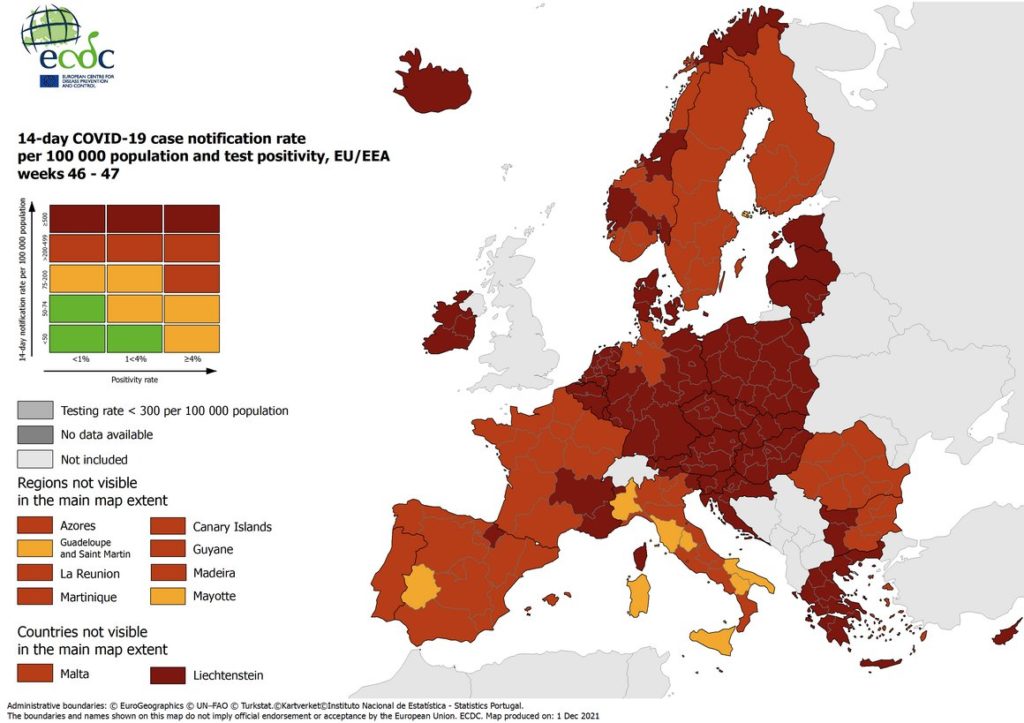The map of Europe is once again turning redder, as the last green areas have disappeared completely and the number of orange zones is also decreasing in the latest update of the European Centre for Disease Prevention and Control (ECDC).
Belgium remains dark red, as do the Netherlands, large parts of Germany and virtually all of Eastern Europe, with the exception of Romania and parts of Bulgaria.
Updated ? maps are online!
These maps aim to support the @EUCouncil recommendation on travel measures in the EU during #COVID19 pandemic. Color-blind friendly map in the next tweet.https://t.co/CcBVx6B0o5 pic.twitter.com/fbQfkV8Fmt — ECDC (@ECDC_EU) December 2, 2021
In this update, there are only 11 orange zones left in all of Europe, including Åland (an autonomous island region of Finland) and Sardinia (Italy), which were still green a fortnight ago.
Extremadura (Spain), the regions of Piedmont, Tuscany, Umbria, Apulia, Basilicata and Sicily (Italy) and the French overseas territories of Guadeloupe/Saint Martin and Mayotte are also still coloured orange.
The European colour codes are an indication for the EU Member States to impose conditions on returning travellers, such as mandatory testing or quarantine. The colours are also taken into account for the admission of travellers to their own countries.
Member States cannot impose extra restrictions on travellers coming from a green area, but they could demand a negative test and/or quarantine for (unvaccinated) people coming from orange or red zones.
According to Belgium's rules for travellers coming (back) from red countries, non-vaccinated people from 12 years old who do not have a recovery certificate must be tested on day 1 or 2 of arrival.
All travellers wishing to enter Belgium after more than 48 hours abroad are required to complete the Passenger Locator Form (PLF), regardless of the colour code of the zone they return from.

